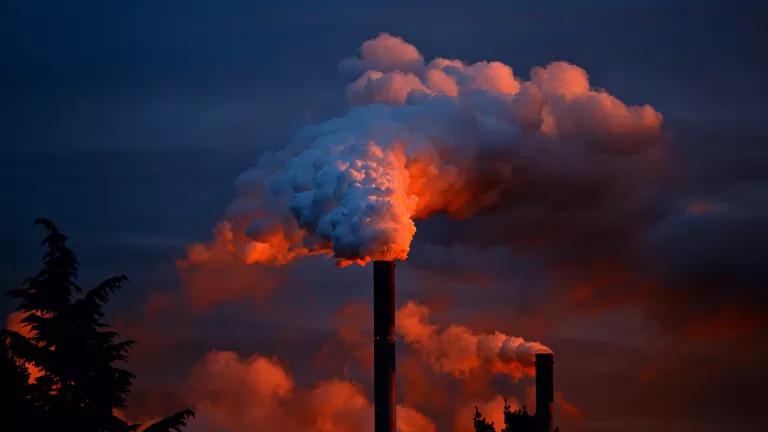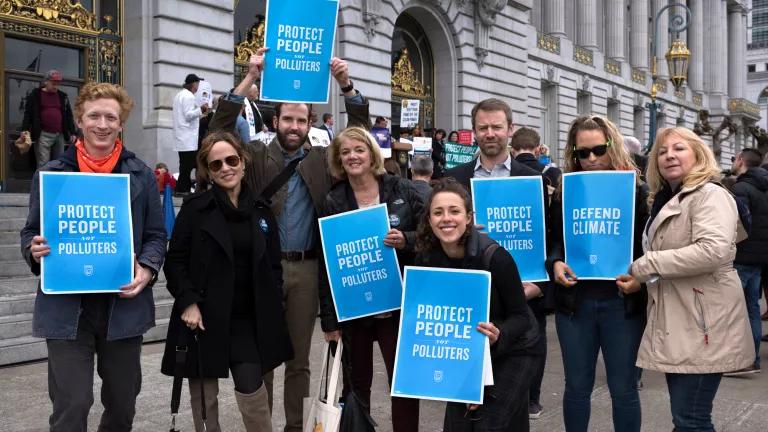Fringe Science at the EPA Threatens Progress on Clean Air

After years of study, the scientists at the U.S. Environmental Protection Agency have compiled an 1,800 page analysis showing that fine particulate matter poses great risks to the health and welfare of our nation, a finding that should lead to new protections for clean air. But, in the latest example of the Trump administration’s continuing attacks on sound science, a politically motivated advisory committee is doing its best to undercut this finding.
I was once one of the agency scientists who helped sift through the research and reach the finding that even low levels of this type of pollution cause heart disease, cancer, and early death. At a hearing this week, concerned Americans will be asking the Clean Air Science Advisory Committee to conduct an honest review of the science. I fear some on the panel aren’t willing or able to do that.
While this process is complicated and obscure, the impact on the air we all breathe could be profound. Accepting the scientific conclusions in EPA’s report should lead to a tightening of the amount of harmful particulate matter that’s allowed from smokestacks and tailpipes.
So, here’s what’s happening:
For almost half a century, the EPA’s implementation of the Clean Air Act has helped to clean up our nation’s air and deliver monumental, trillion dollar benefits for human health and the economy. The law lays out a process for safeguarding our nation’s air through national air quality standards (limits) based on the best available science. By law, EPA revisits these standards every five years and assesses the latest scientific evidence. Agency scientists work for years to compile an Integrated Science Assessment (ISA), an exhaustive report that surveys all of the available and credible data, synthesizes the available evidence, and makes determinations about the strength of the evidence implicating air pollution in specific health problems like heart disease, bronchitis, cancer, asthma, and stroke.
We are learning more and more each day about the harmful effects of air pollution, so these updates often lead to greater protections from pollution. After the EPA’s scientific team completes its analysis, the report is reviewed by a federal advisory committee, the Clean Air Science Advisory Committee (CASAC), which provides input on the ultimate determination about whether to strengthen (or weaken) the air quality standards. Because there’s so much complex science to review, the CASAC has historically relied on additional air pollution expert panels comprised of teams of medical professionals, epidemiologists, toxicologists, engineers, atmospheric scientists, and other technical advisors to make its recommendations. Since 1970, this rigorous and transparent process has been driven by mainstream science and the health of our citizens has benefited as a result.
Coordinated Attacks on Science
This legacy of scientific integrity has broken down under President Donald Trump. The EPA has rejected sound science and tried to severely limit the types of scientific studies that EPA can consider when making decisions. It has questioned and censored established climate change science and argued, against the conclusions of its own staff, that the worst effects of our climate crisis are still 50 or 75 years away. It has misled the public and made dishonest statements about its terrible proposed Clean Power Plan replacement, which would be worse than doing nothing.
In 2017, disgraced former EPA Administrator Scott Pruitt stacked the CASAC panel in a pro-industry makeover and shrunk the number of experts on it and on supporting panels from 28 to just seven. The CASAC is currently led by Louis Anthony "Tony" Cox, Jr., a Denver-based consultant who has argued that clean air is not beneficial for anyone. When you start from that radical position, it’s no surprise that you would reject scientific findings that show air pollutants are doing more damage to our hearts, lungs and quality of life.
Fringe Arguments vs. Established Scientific Consensus
EPA’s draft ISA supports even stronger air pollution safeguards, based on the best available evidence. In response, Cox now argues through the CASAC that the exhaustive ISA does not follow “widely accepted scientific methods” and does not comprehensively consider the available science on air pollution impacts on health. I know from my experience at EPA that this couldn’t be farther from the truth. EPA scientists have assembled a comprehensive and convincing assessment of the science. The draft ISA has hundreds of references to peer-reviewed science. It is further supported by earlier comprehensive assessments that prior CASAC panels have agreed with for decades.
At least some members of the diminished CASAC are standing up for sound science. For example, buried on page 20 of its draft findings, other CASAC members rightly acknowledge the truth that “the evidence supporting the causal relationship between fine particulate matter (PM2.5) exposure and mortality is robust, diverse, and convincing.” These members go on to note that the draft ISA includes a wide range of evidence that’s widely accepted by other countries and international authorities like the World Health Organization. The other CASAC members note that the evidence documenting the considerable health risks of air pollution is, if anything, “even more robust now” than it was a decade ago when the EPA last produced a science assessment for fine particulate matter.
Given just how far outside of the mainstream Cox’s arguments are, it is not surprising to see a groundswell of opposition from the scientific community. The past immediate CASAC chair is among a growing chorus of experts who are standing up to defend sound science, and urging EPA and the CASAC not to take unprecedented shortcuts in a rush to weaken air pollution standards while President Trump is in office.
Tightening our air pollution standards may be a problem for the polluters with cozy ties to the Trump administration and the former lobbyists in charge of the EPA, but cleaner air will have broad benefits to the health and welfare of millions. Sound science shows us this. We cannot let the Trump administration’s pro-polluter agenda undercut that conclusion.




